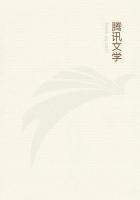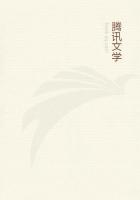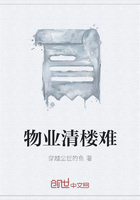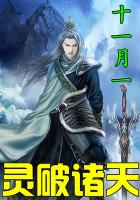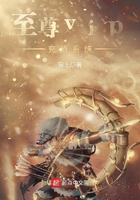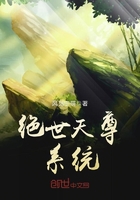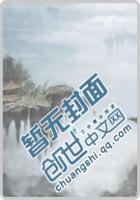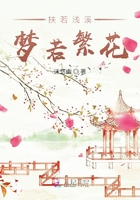Presently they burned up, ****** two faint stars of light which, however, were not strong enough to show us either the roof or the sides of that vast place.By their aid we pursued our path, still following the grooves till suddenly these came to an end.Now all around us was a flat floor of rock which, as we perceived clearly when we pushed aside the dust that had gathered thickly on it in the course of ages, doubtless from the gradual disintegration of the stony walls, had once been polished till it resembled black marble.Indeed, certain cracks in the floor appeared to have been filled in with some dark-coloured cement.Istood looking at them while Bickley wandered off to the right and a little forward, and presently called to me.I walked to him, Bastin sticking close to me as I had the other candle, as did the little dog, Tommy, who did not like these new surroundings and would not leave my heels.
"Look," said Bickley, holding up his candle, "and tell me--what's that?"
Before me, faintly shown, was some curious structure of gleaming rods made of yellowish metal, which rods appeared to be connected by wires.The structure might have been forty feet high and perhaps a hundred long.Its bottom part was buried in dust.
"What is that?" asked Bickley again.
I made no answer, for I was thinking.Bastin, however, replied:
"It's difficult to be sure in this light, but I should think that it may be the remains of a cage in which some people who lived here kept monkeys, or perhaps it was an aviary.Look at those little ladders for the monkeys to climb by, or possibly for the birds to sit on.""Are you sure it wasn't tame angels?" asked Bickley.
"What a ridiculous remark! How can you keep an angel in a cage?
I--"
"Aeroplane!" I almost whispered to Bickley.
"You've got it!" he answered."The framework of an aeroplane and a jolly large one, too.Only why hasn't it oxidised?""Some indestructible metal," I suggested."Gold, for instance, does not oxidise."He nodded and said:
"We shall have to dig it out.The dust is feet thick about it;we can do nothing without spades.Come on."We went round to the end of the structure, whatever it might be, and presently came to another.Again we went on and came to another, all of them being berthed exactly in line.
"What did I tell you?" said Bickley in a voice of triumph."Awhole garage full, a regular fleet of aeroplanes!""That must be nonsense," said Bastin, "for I am quite sure that these Orofenans cannot make such things.Indeed they have no metal, and even cut the throats of pigs with wooden knives."Now I began to walk forward, bearing to the left so as to regain our former line.We could do nothing with these metal skeletons, and I felt that there must be more to find beyond.
Presently I saw something looming ahead of me and quickened my pace, only to recoil.For there, not thirty feet away and perhaps three hundred yards from the mouth of the cave, suddenly appeared what looked like a gigantic man.Tommy saw it also and barked as dogs do when they are frightened, and the sound of his yaps echoed endlessly from every quarter, which scared him to silence.
Recovering myself I went forward, for now I guessed the truth.It was not a man but a statue.
The thing stood upon a huge base which lessened by successive steps, eight of them, I think, to its summit.The foot of this base may have been a square of fifty feet or rather more; the real support or pedestal of the statue, however, was only a square of about six feet.The figure itself was little above life-size, or at any rate above our life-size, say seven feet in height.It was very peculiar in sundry ways.
To begin with, nothing of the body was visible, for it was swathed like a corpse.From these wrappings projected one arm, the right, in the hand of which was the likeness of a lighted torch.The head was not veiled.It was that of a man, long-nosed, thin-lipped, stern-visaged; the countenance pervaded by an awful and unutterable calm, as deep as that of Buddha only less benign.
On the brow was a wreathed head-dress, not unlike an Eastern turban, from which sprang two little wings resembling in some degree those on the famous Greek head of Hypnos, lord of Sleep.
Between the folds of the wrappings on the back sprang two other wings, enormous wings bent like those of a bird about to take flight.Indeed the whole attitude of the figure suggested that it was springing from earth to air.It was executed in black basalt or some stone of the sort, and very highly finished.For instance, on the bare feet and the arm which held the torch could be felt every muscle and even some of the veins.In the same way the details of the skull were perfectly perceptible to the touch, although at first sight not visible on the marble surface.This was ascertained by climbing on the pedestal and feeling the face with our hands.
Here I may say that its modelling as well as that of the feet and the arm filled Bickley, who, of course, was a highly trained anatomist, with absolute amazement.He said that he would never have thought it possible that such accuracy could have been reached by an artist working in so hard a material.
When the others had arrived we studied this relic as closely as our two candles would allow, and in turn expressed our opinions of its significance.Bastin thought that if those things down there were really the remains of aeroplanes, which he did not believe, the statue had something to do with flying, as was shown by the fact that it had wings on its head and shoulders.Also, he added, after examining the face, the head was uncommonly like that of the idol that he had blown up.It had the same long nose and severe shut mouth.If he was right, this was probably another effigy of Oro which we should do well to destroy at once before the islanders came to worship it.
Bickley ground his teeth as he listened to him.

